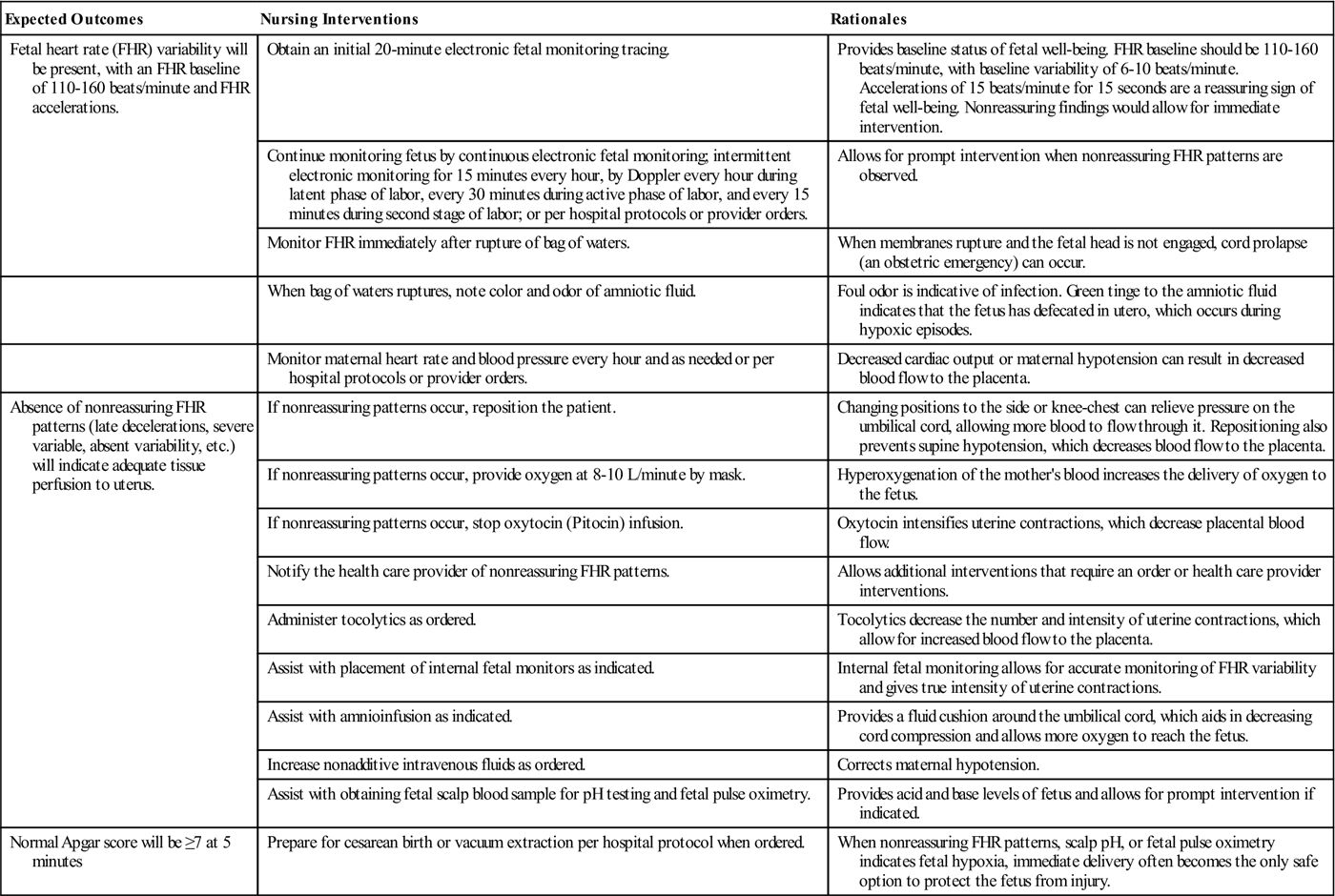


This first stage of childbirth is known as the dilatation period. The increase in the strength of contractions usually is accompanied by an increase in the amount of show because of rupture of capillaries in the dilating cervix. The contractions recur at shorter and shorter intervals, every three to five minutes, and become progressively stronger and longer lasting. True labor contractions are regularly spaced and usually start in the small of the back, or as a feeling of tightness in the abdomen, or of pressure in the pelvis. braxton-hicks contractions, or “false labor pains,” can be distinguished from true labor contractions by the irregular time intervals between them and by their tendency to disappear when the patient changes position or gets up and walks about. The contractions, however, can be confusing. The first two of these signs are almost always unmistakable. The beginning of labor is usually indicated by one or more of the following signs: (1) show (passage from the vagina of small quantities of blood-tinged mucus) (2) breaking the “bag of waters” (normal rupture of membranes, indicated by a gush or slow leakage of amniotic fluid from the vagina) and (3) true labor contractions. The mechanisms of labor (for a vertex presentation) consist of the following sequence of events: engagement (posterior occiput of fetus enters the pelvic outlet) flexion (of fetal head) descent (fetal head descends lower into the midpelvis) internal rotation (fetal head and body rotate so that the occiput is more anterior) extension (fetal head extends once the occiput is beneath the symphysis pubis) and external rotation (fetal head rotates back to position it had at engagement).įirst Stage of Labor. The progress and final outcome of labor are influenced by four factors: (1) the “passage” (the soft and bony tissues of the maternal pelvis) (2) the “powers” (the contractions or forces of the uterus) (3) the “passenger” (the fetus) and (4) the “psyche” (mother's emotional state, e.g., anxiety). Normally at the end of pregnancy oxytocin, which is stored in the posterior lobe of the pituitary gland, is released and stimulates contraction of the uterine muscles.

Labor is believed to be triggered by the release of oxytocin and prostaglandins, after a fall in the levels of other hormones. Called also accouchement and parturition. The third stage (placental stage) extends from the expulsion of the child until the placenta and membrane are expelled and contraction of the uterus is completed. The second stage (expulsion) extends from the end of the first stage until the expulsion of the infant is completed. It may be divided into three stages: The first stage ( dilatation) begins with the onset of regular uterine contractions and ends when the cervical os is completely dilated and flush with the vagina, thus completing the birth canal.

The physiologic process by which the uterus expels the products of conception ( fetus or newborn and placenta), after 20 or more weeks of gestation.


 0 kommentar(er)
0 kommentar(er)
